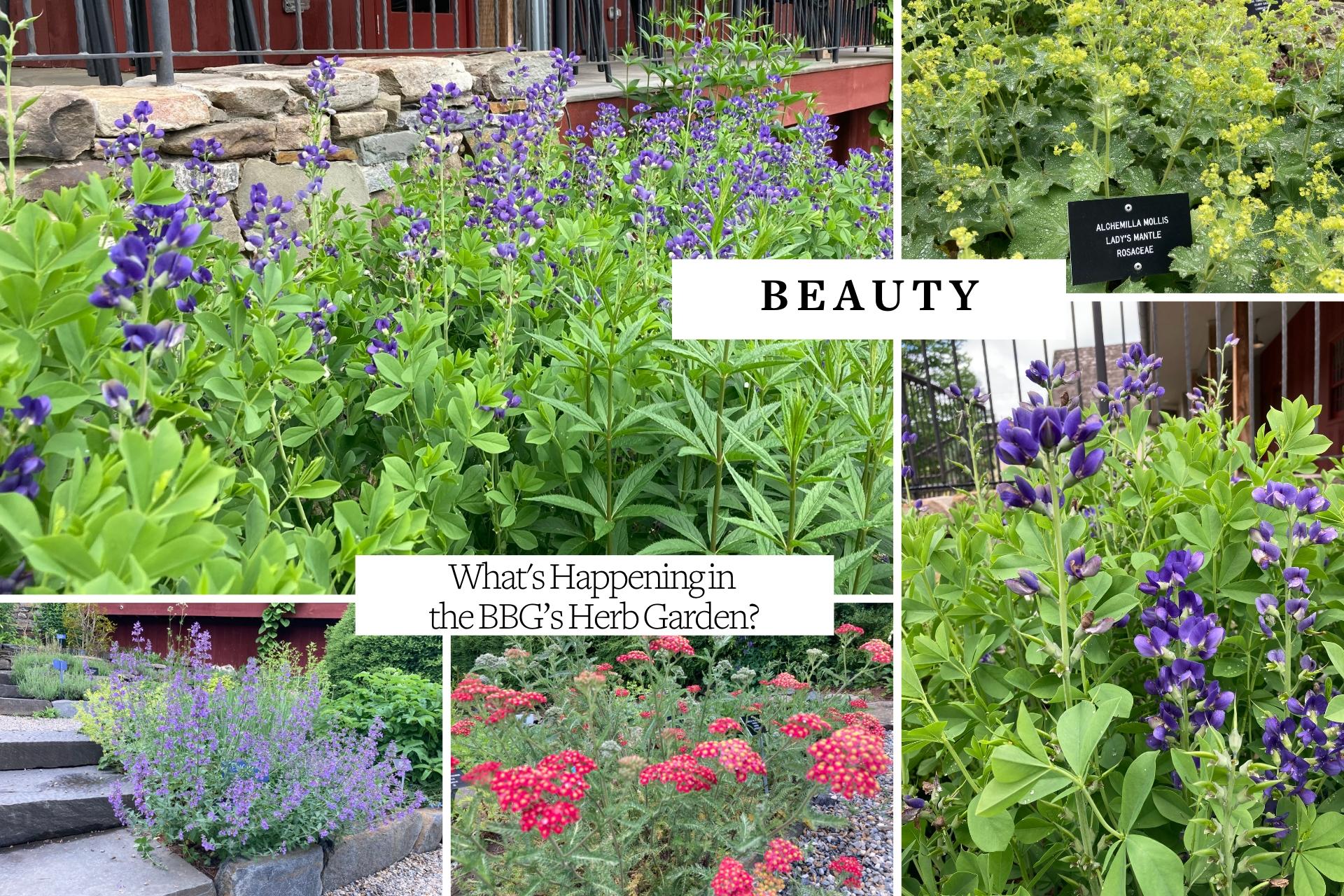You are here
Herb Feature of the Week: Beauty
Herb Feature of the Week: Beauty
From top, left, clockwise: Baptisia (false indigo); Alchemilla mollis (Lady’s Mantle); more Baptisia (false indigo); Achillea millefolium “Paprika” (Yarrow); and Nepeta x faassenii “Walker’s Low” (Catmint).
By Barbara Smith
Many home gardeners developing a border will first consider the basics: the growing zone, the conditions (sun/shade), the soil (sandy/clay, dry/wet). Once those filters are applied to the range of possibilities, the next likely deciding point in choosing plants is the “look” of the plant — its size, bloom time, texture and color — in other words, the beauty of the plant to the beholder.
We know that herbs as a category of plants are “useful” in many ways — not just employed in the kitchen, but also to create fragrances, cosmetics, dyes and medicines, for example. In all this usefulness, perhaps the beauty of herbs goes under sung. This week’s report from the Display Herb Garden will celebrate four herbs currently blooming that are lovely to behold and worthy of addition to your garden.
• Alchemilla mollis — common name, Lady’s Mantle.
A clump-forming perennial bearing delicate sprays of frothy yellow-chartreuse flower clusters bloom over scallop shaped, hairy light green leaves; grows 1-2 feet tall; attracts butterflies, deer resistant. A popular choice for cut flower bouquets.
• Achillea millefolium “Paprika” — common name, Yarrow.
This perennial bears masses of upright flowers throughout summer on delicate foliage; prefers full sun, average soil and good drainage; and attracts butterflies. Its history indicates the genus was named after Achilles, the hero of the Trojan Wars in Greek mythology, who used the plant to stop bleeding and heal the wounds of soldiers.
• Nepeta x faassenii “Walker’s Low” — common name, Catmint.
Nepeta Walker’s Low is a long-blooming perennial plant with spikes of small purple flowers that attract hummingbirds, bees and butterflies. Nepeta is a vigorous and dependable plant, which is rabbit and deer resistant. Cutting back after bloom will encourage repeat bloom until frost. At maturity, the plant grows to 3 feet tall and wide.
• Baptisia — common name, Wild Indigo
This herbaceous, long-lived perennial is found in the pollinator bed, performing best in full sun. Baptisia is native to North America, with tall flower spires (similar to lupines) and attractive foliage that lasts. Plants are drought tolerant and deer resistant. There are 15 species in the genus Baptisia, with flowers blooming white, yellow, purple or red. (Check the Mt. Cuba website for an informative research report on their trials of Baptisia.) The flowers are a food source for queen bumblebees, and several butterfly varieties use Baptisia as a host plant to lay their eggs and to serve as a food source for their caterpillars.
Do make a point to visit the Display Herb Garden on your next visit to the Berkshire Botanical Garden, and enjoy the variety of plants growing and flowers blooming there.
The Berkshire Botanical Garden’s Herb Associates began in 1957 and have been making and selling products for the benefit of BBG ever since. At BBG, the Herb Associates oversee a display garden and production garden, both located near the Center House. Members/volunteers meet every Tuesday morning during the late spring through mid-autumn each year, coinciding when the gardens themselves are open to the public. Members plant, weed and tend the gardens, as well as harvest and process the variety of herbs.
Help Our Garden Grow!
Your donation helps us to educate and inspire visitors of all ages on the art and science of gardening and the preservation of our environment.
All Donations are 100 percent tax deductible.



